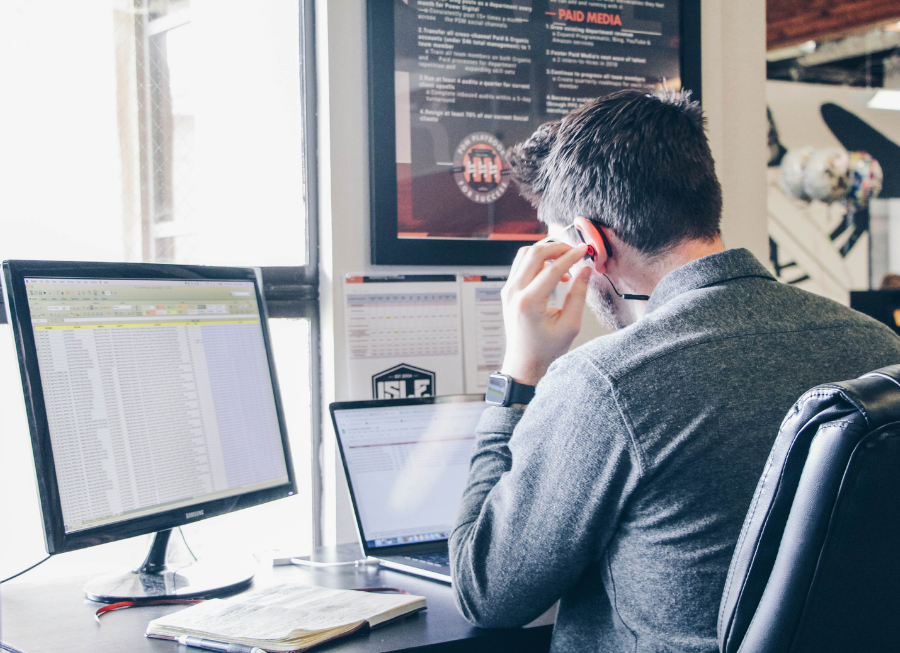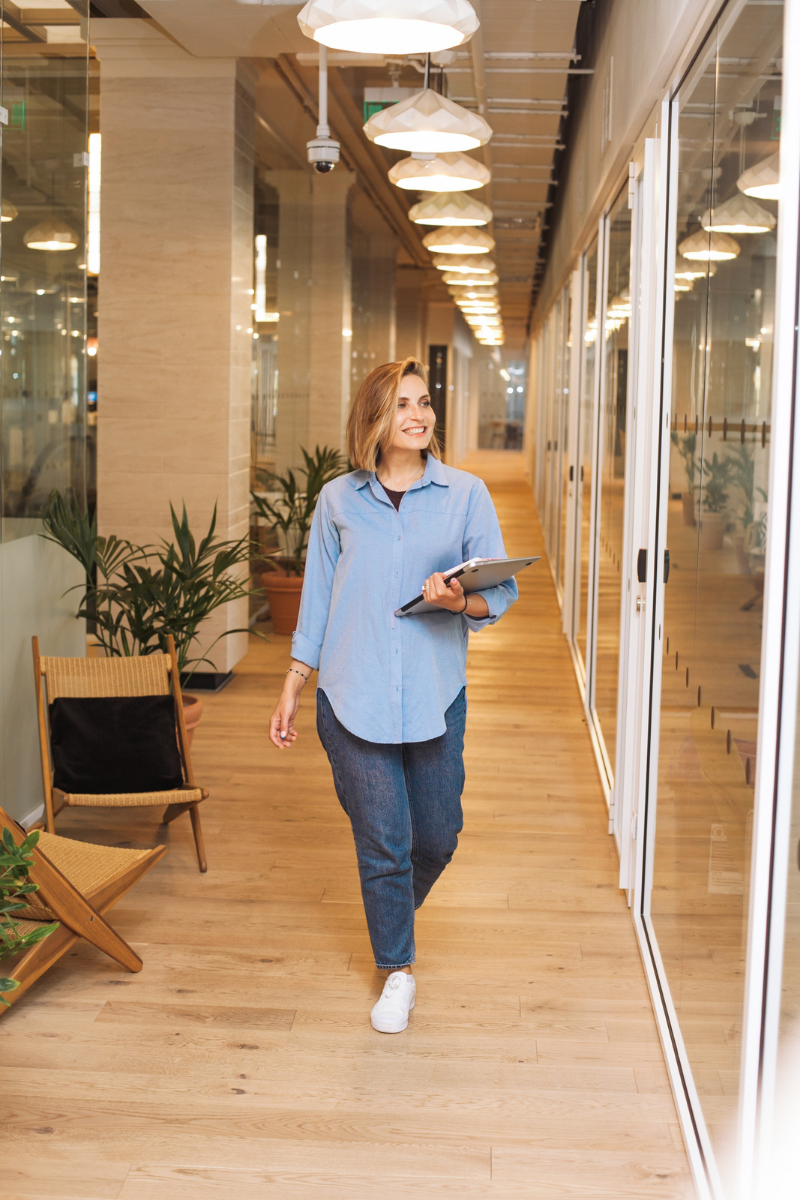Still Sitting at Your Desk? 10 Fun Ways to Stand Up for Better Health
On Thursday 28th of April, you’re encouraged to think of James Brown, get into the groove, and ‘get up offa that thing’. What thing? Your bottom! If your typical working day has you stuck at your desk then On Your Feet Britain is the perfect event to help you sit less and move more. It’s essential to break the cycle of sitting. Learn why, then check out these fun suggestions to stand up for better for health.
By Nina Sabat
Editors note: At Revital we love to share ideas with our community and hope to inspire actions that serve your health. We also acknowledge that when it comes to wellbeing there’s no one size of advice that fits all. If you are unable to take part in the physical transitions but love the idea of encouraging health at work, please do share our blog with a friend.
- How Much Time Do You Spend Sitting?
- Is Sitting the New Smoking?
- Why Staying Seated Is A Risky Business
- The Health Benefits of Taking a Stand at Work
- Why You Don’t Need Special Office Equipment
- 10 Ideas To Get On Your Feet For Better Health
How Much Time Do You Spend Sitting?

Like many people, you might feel you have an active lifestyle but it's easy to underestimate the amount of sitting you actually do.
If you sit to travel to work, then work seated for most of your day, sit as you travel home, then spend an hour or two at night eating dinner and watching TV, then before you know it, you’ll have spent a huge chunk of time on your bottom.
Sitting is a sedentary behaviour, a type of activity which requires minimal effort and adopts a particular posture (if not sitting, then lying down).
On average adults spend nine hours each day sitting down.
Is Sitting the New Smoking?
So, the average adult spends more than a third of their day on their bottom. But is it really so bad to spend so much time seated? As a stress-free activity which makes minimal demands on the body can it really be that bad for your health?
It’s been suggested that sitting is the new smoking and should be held in the same regard - once socially acceptable, previously practised by many, but now with well-documented health hazards that you want to avoid.
However, a recent meta-analysis found this statement to be a slight exaggeration. [1]
When heavy smokers were compared with non-smokers, the smokers had 2000 excess deaths from any cause per 100, 000 people per year. In contrast, when prolonged sitters were compared with short-duration sitters, there were only 190 excess deaths from any cause per 100, 000 people per year in the group that spent more time sitting down.
2000 vs 190. With numbers like this you won’t be lighting up but you might be tempted to stay sitting down.
Why Staying Seated Is A Risky Business
Sitting isn’t the new smoking. However, there are some effects on your health to be aware of if you spend most of your working day seated.
While sitting might not be as risky as smoking, there’s still plenty of evidence that shows excessive sitting doesn’t do you any favours.
The same review reported that spending more time seated increases your risk of adverse health outcomes, doubles your risk of developing type 2 diabetes and has also been associated with a greater risk of depression.
If you spend a lot of your time seated during the day, you’ll probably be ready to sit less, move more and stand up for your health.
The Health Benefits of Taking a Stand at Work
There are lots of studies which report positive changes when people spend time standing during their workday.
Benefits include reduced fatigue [2] and improved biomarkers of cardiovascular disease risk. [3]
Most employers would be delighted too.
In one study, changing posture from sitting to standing or walking didn’t affect the participants ability to complete cognitive tasks. [4] A different study reported an increase in productivity when call-centre workers started to stand. [5]
Sit less and move more. If you want to feel less fatigued, and be more productive at work it’s very appealing.
But do you need special office equipment to get the most health benefits? Read on, you’re in for a surprise.
Why You Don’t Need Special Office Equipment
Many office environments have begun to explore ways to reduce sedentary behaviours. Chairs might be swapped for exercise balls. Traditional desks could be replaced with, pedal desks, treadmill desks or sit/stand desks.
However, if you imagine standing at a desk is the better choice you’re in for a shock.
A team of researchers took a closer look at office workers and compared the amount of energy they expended on general tasks. They measured the amount of energy needed when tasks were done sitting down vs when they were done standing up.
They were surprised to find that for most office tasks there wasn’t that much difference. When subjects were working quietly, typing, reading, or sorting papers, they spent similar amounts of energy whatever posture they had.
But if there’s no huge difference between working sitting or standing, how can you experience the health benefits mentioned above?
The researchers shared two insights:
- ‘Tasks should be more dynamic rather than simply being conducted in a different posture’
- ‘Sedentary time should be broken up with periods of more dynamic activity’
If you’re tempted to buy new equipment be aware of how you use it. The ideal is to change posture and move dynamically. Remember, it’s sit less AND move more. If you simply switch and spend extra time standing it probably won’t be better than if you remained sitting down.
10 Ideas To Get On Your Feet For Better Health

When it comes to staying active, switched on and productive at work, it’s not about what you do but how you do it. You’ll be on to a good thing if you introduce different postures and add dynamic movement into your day.
Here are 10 ideas to help you sit less, move more, get healthy at work AND have some fun.
1. Kick off your day on the right foot by walking from the station or up the stairs at work
2. Set a 30-minute reminder so you remember to stand up and stretch. Why not grab a glass of water at the same time?
3. Go for a 3-minute ‘swim’ along the corridor - leave the office and walk through the building stretching your arms and twisting your upper body as if you were doing the front crawl in the local pool
4. Stand up and take a 2-minute power pose after every Zoom meeting. Head erect, chest proud, arms stretched up or outwards. Look out of a window into the distance. And remember to breathe!
5. Take a break a lunchtime and eat somewhere - just not at your desk!
6. Go for a brisk 20-minute walk after eating. This extra activity reduces what’s called the ‘post-prandial insulin spike’ and can prevent your energy from crashing in the afternoon
7. Got back-to-back Zoom calls? Take some meetings standing or switch off your camera and go for a walk as you talk
Alternatively, get your colleagues involved in On Your Feet Britain and plan some group activities for the day.
8. You could meet up and do a mid-morning corridor conga
9. You could set a challenge and see who can do the most squats between 4pm and 4.10pm
10. You could try ‘musical chairs’ at lunchtime. Play ‘Get Up Offa That Thing’ or unleash your inner DJ with ‘Let’s Twist Again’, or ‘The Macarena Dance’ or ‘Jump Around’. (Could the boys from The House of Pain be more on the ball with their enticement to: ’Get up, stand up. C’mon throw your hands up. If you’ve got the feeling, jump up touch the ceiling’?). When you hear the music everyone gets to stand up, join in and move.
Summary
Breaking out of the workday sedentary slump has proven benefits for your health - improved productivity, improved concentration, less fatigue and even a reduced risk of cardiovascular disease. You don’t even need to invest in expensive office equipment. The key is to make your everyday actions more dynamic, and to get up, change position and move more frequently during the day. Get your colleagues involved if you relish a team challenge. Then you can all join in and have some fun as you sit less, move more and stand up for your health.
References
[1] Vallance et al, 2018. Evaluating the Evidence on Sitting, Smoking, and Health: Is Sitting Really the New Smoking?
[2] Thorp et al, 2014. Breaking up workplace sitting time with intermittent standing bouts improves fatigue and musculoskeletal discomfort in overweight/obese office workers.
[3] Healy et al, 2015. Replacing sitting time with standing or stepping: Associations with cardio-metabolic risk biomarkers.
[4] Ohlinger et al 2011. The effect of active workstation use on measures of cognition, attention, and motor skill.
[5] Garrett et al, 2016. Call center productivity over 6 months following a standing desk intervention.